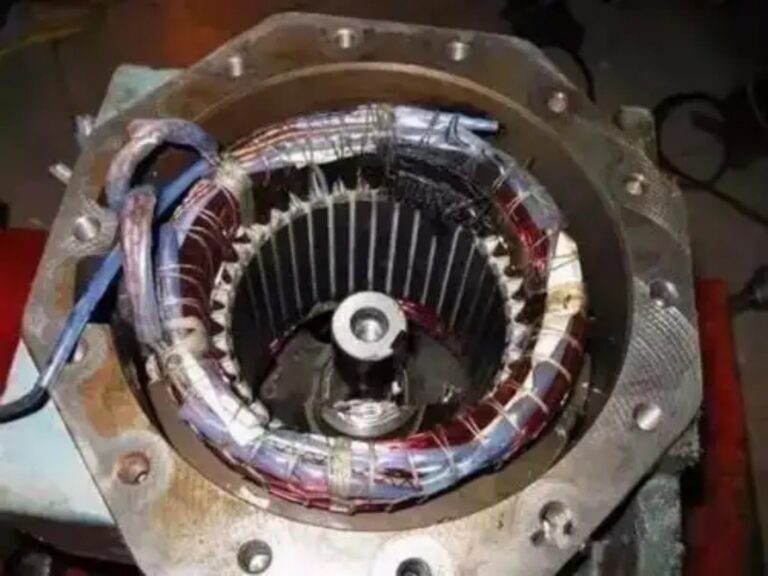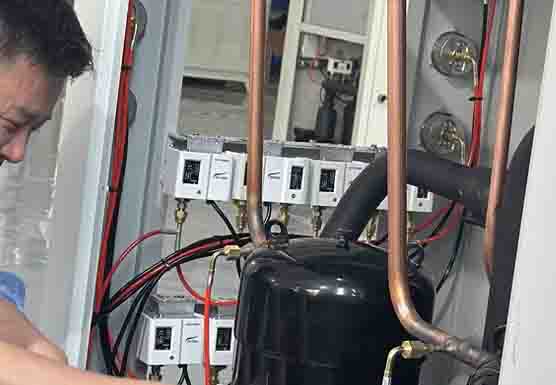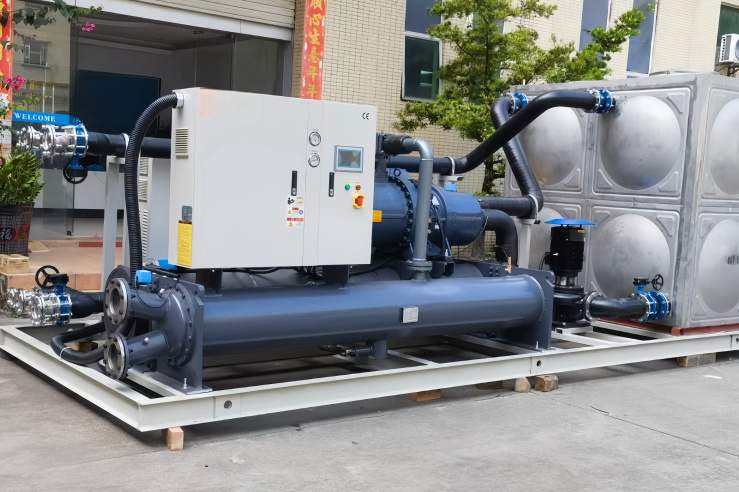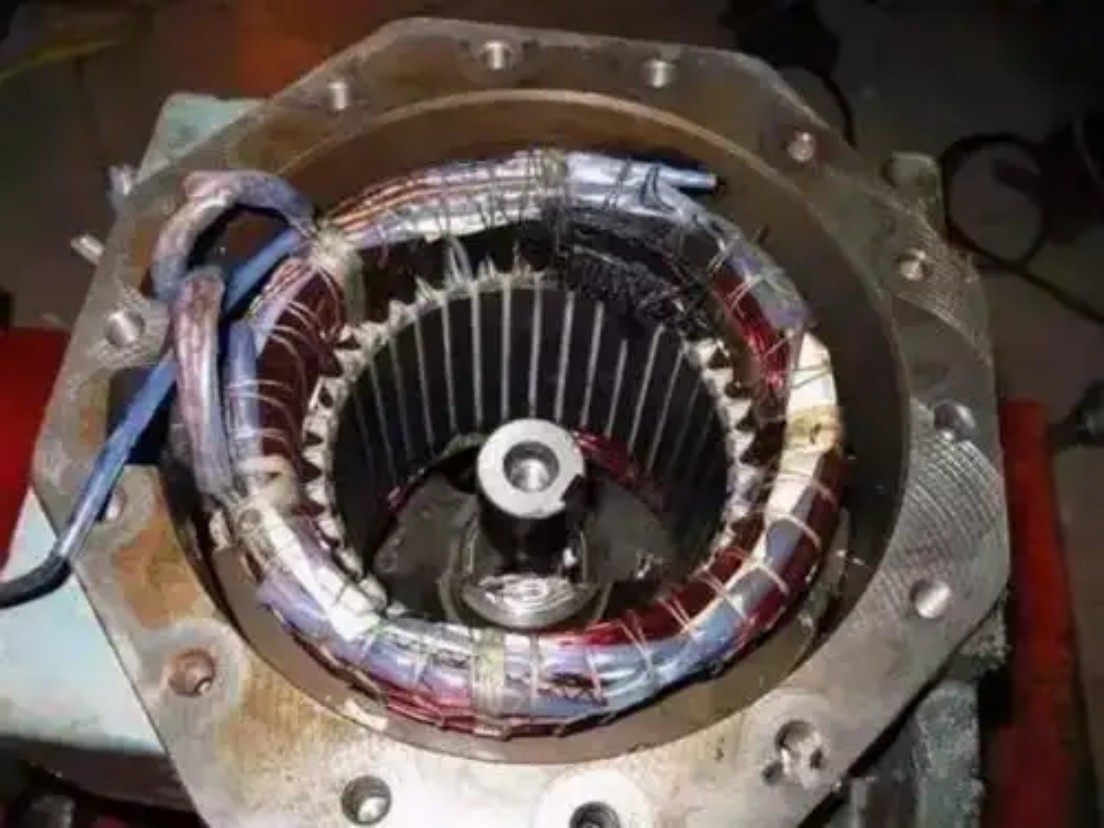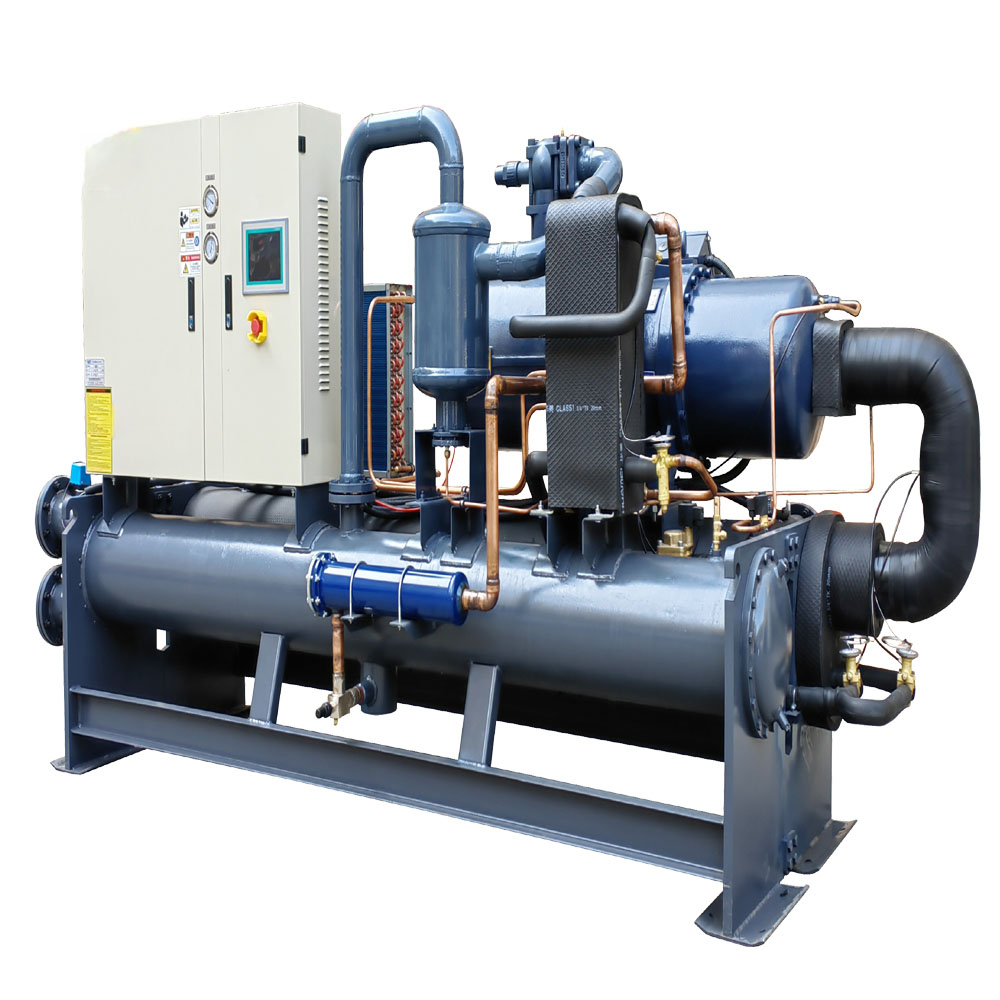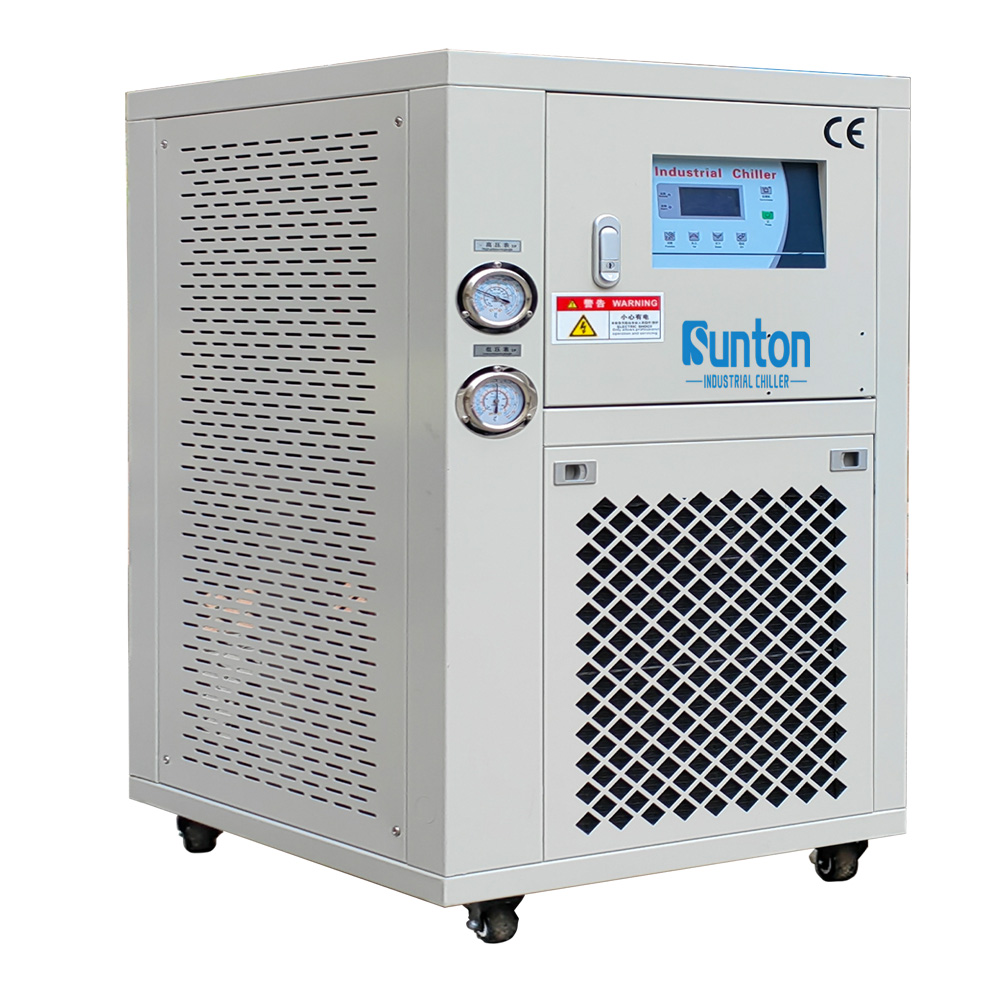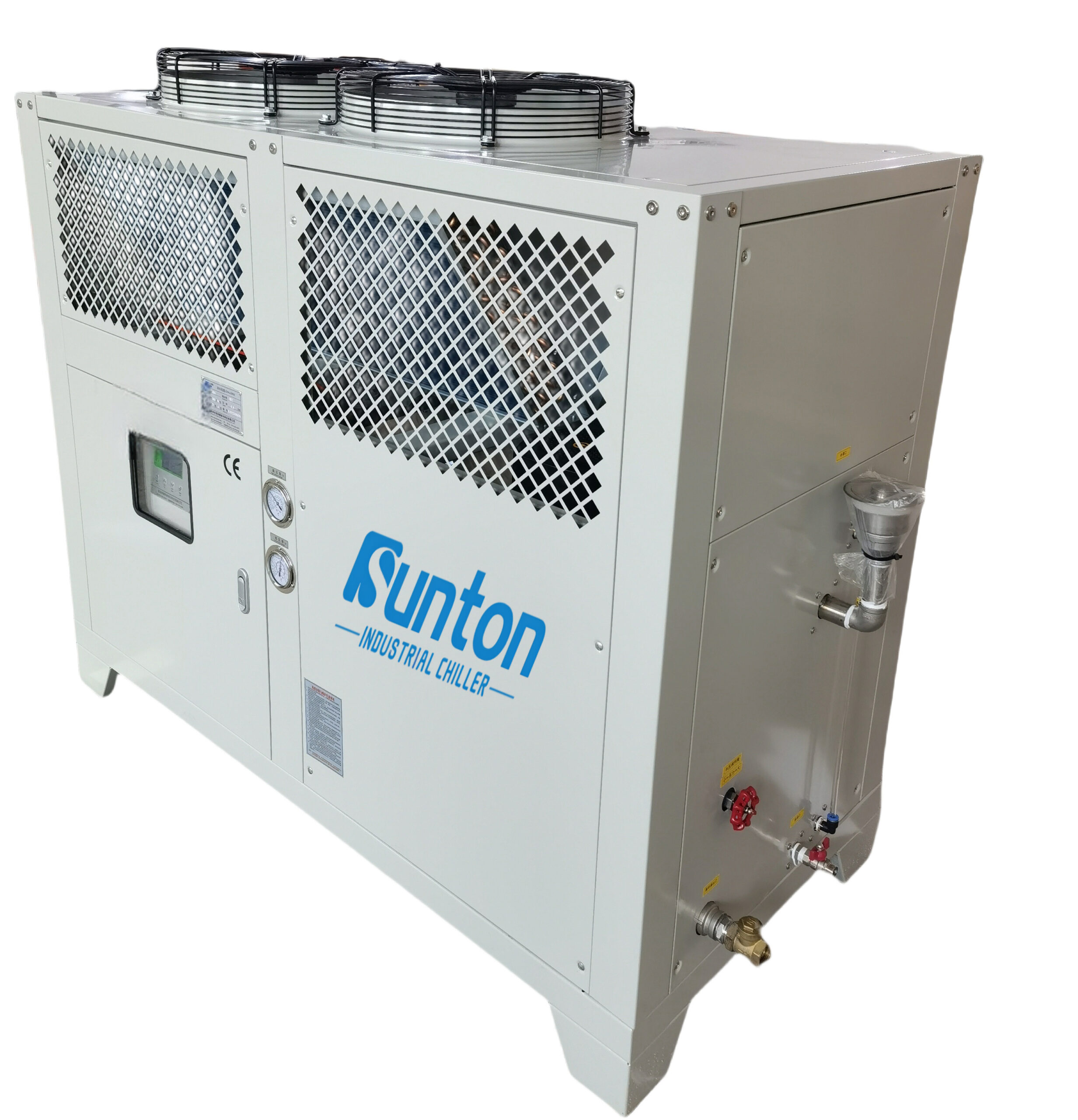-
Dalingshan Industrial Guangdong
¿Cuánto cuesta un enfriador de salmuera industrial?
Beneficios de los enfriadores de salmuera industriales: enfriamiento eficiente para el procesamiento de plásticos
En los mercados competitivos actuales, optimizar las temperaturas en procesamiento de plástico es fundamental para cualquier sistema de enfriadores de agua industriales. Aquí es donde Enfriadores de salmuera industriales y enfriadores de agua industriales Entra, proporciona un control preciso de la temperatura y mejora la calidad general de la producción de plástico. Este artículo te guiará a través de todo lo que necesitas saber sobre estas soluciones de refrigeración avanzadas, incluyendo enfriadores industriales, y cómo pueden revolucionar tus procesos de fabricación.
Índice
¿Qué es un enfriador de salmuera y por qué es esencial para el procesamiento de plástico?
A enfriador de salmuera Es un tipo de equipo de enfriamiento diseñado para reducir eficientemente las temperaturas en aplicaciones industriales, particularmente en procesamiento de plásticoUtilizando un solución de salmueraEstos enfriadores permiten un control preciso de la temperatura, lo cual es fundamental para mantener la calidad del producto.
Importancia en el procesamiento del plástico
- Estabilidad de la temperaturaMantiene constantemente bajas temperaturas necesarias para un moldeado y extrusión de plástico efectivos.
- Refrigeración eficiente:Ofrece una rápida reducción de temperatura, lo que acelera los ciclos de fabricación.
- Fiabilidad:Garantiza la estabilidad del proceso, reduciendo el desperdicio y elevando los estándares del producto.
El uso de un enfriador de salmuera puede mejorar drásticamente la eficiencia de la producción y la calidad del producto en las instalaciones de producción de plástico.
¿Cómo funciona un sistema enfriador de salmuera?
Los enfriadores de salmuera aprovechan los principios de refrigeración y transferencia de calor para gestionar los niveles de temperatura con precisión.
Operación del sistema
- Ciclo del refrigerante: A compresor Hace circular refrigerante que absorbe calor del agua de proceso en el evaporador.
- Circulación de salmuera: Agua de salmuera, una solución de sal en agua, mejora el efecto de enfriamiento al transportar temperaturas frías al sistema, particularmente en unidades enfriadoras de salmuera.
- Disipación de calor: El condensador Libera eficazmente el calor absorbido, completando el ciclo de enfriamiento.
Estos sistemas ofrecen una solución eficiente y sostenible a las necesidades de la industria de procesamiento de plástico.
¿Cuáles son los tipos de enfriadores de salmuera?
Elegir lo correcto tipo de enfriador es crucial para optimizar sus procesos de enfriamiento.
Tipos de enfriadores de salmuera
- Enfriadores de salmuera refrigerados por aire:Utilizan aire para disipar el calor y son ideales para espacios con suministro de agua limitado.
- Enfriadores de salmuera refrigerados por agua:Utilice agua, normalmente de un torre de refrigeración, para eliminar el calor y son adecuados para aplicaciones más grandes que necesitan una potencia de enfriamiento sustancial.
La selección del tipo apropiado dependerá de sus requisitos específicos y de su entorno operativo.
Enfriadores de salmuera enfriados por aire o enfriados por agua: ¿cuál es mejor para usted?
Cada tipo de enfriador tiene sus propias ventajas y elegir el correcto puede tener un gran impacto en la eficiencia y la rentabilidad.
Consideraciones
- Eficiencia en sistemas de refrigeración industriales: Enfriadoras por agua Ofrecen una mayor eficiencia en instalaciones más grandes debido a su capacidad superior de absorción de calor y a menudo se comparan con los enfriadores de agua.
- Instalación: Enfriadoras refrigeradas por aire Suelen ser más fáciles y económicos de instalar, ya que no requieren una torre de enfriamiento.
- Ambiente:Tenga en cuenta las condiciones ambientales de su sitio y la disponibilidad de recursos como el agua.
Su elección debe basarse en equilibrar estas consideraciones con sus necesidades operativas específicas.
Comprensión del papel del glicol en los enfriadores de salmuera
Glicol Se utiliza frecuentemente junto con enfriadores de salmuera debido a sus propiedades beneficiosas en la gestión de la temperatura.
Propiedades clave del glicol
- Anticongelante:El glicol ayuda a prevenir la congelación de soluciones de salmuera a bajas temperaturas, lo que garantiza que el sistema funcione de manera eficiente.
- Prevención de la corrosión:También actúa como inhibidor de corrosión, protegiendo los componentes del enfriador y prolongando su vida útil.
Incluir glicol en su sistema puede proporcionar una mayor eficiencia de enfriamiento y mayor longevidad del equipo.
Componentes clave de un sistema de enfriador de salmuera industrial
Un enfriador eficaz depende en gran medida de la interacción entre sus distintos componentes.
Componentes principales
- Compresor:Impulsa el ciclo de refrigeración comprimiendo el refrigerante.
- Evaporador en un sistema de refrigeración:Absorbe el calor de la solución de salmuera, facilitando el proceso de enfriamiento.
- Condensador:Descarga el calor absorbido por el refrigerante.
- Intercambiador de calor:Optimiza la transferencia de calor, aumentando la capacidad de enfriamiento general.
Comprender estos componentes es esencial para maximizar el rendimiento de su sistema de enfriador.
Cómo seleccionar el enfriador de salmuera adecuado para sus necesidades de procesamiento de plástico
Invertir en un enfriador de salmuera adecuado requiere un análisis exhaustivo de sus demandas operativas.
Factores a considerar
- Capacidad de refrigeraciónAsegúrese de que la capacidad del enfriador se ajuste a sus necesidades de enfriamiento para evitar un tamaño excesivo o insuficiente.
- Espacio e Instalación:Evalúe el espacio disponible y las consideraciones logísticas para la instalación de sus sistemas enfriados por aire o por agua.
- Eficiencia energética de enfriadores industriales:Opte por sistemas con características de eficiencia energética para minimizar los costos operativos a largo plazo.
Equilibrar estos factores le garantizará elegir un sistema que ofrezca un rendimiento y un valor óptimos.
Principales beneficios del uso de enfriadores de salmuera en aplicaciones industriales
La incorporación de enfriadores de salmuera en sus procesos de producción puede generar numerosos beneficios.
Beneficios clave
- Calidad mejorada:Garantiza un control preciso de la temperatura, reduciendo el desperdicio y mejorando la calidad del producto.
- Ahorro de energía:Los sistemas avanzados ofrecen importantes ahorros de energía, reduciendo así los costos operativos.
- Fiabilidad:Proporciona un rendimiento constante, vital para mantener una producción ininterrumpida en aplicaciones de refrigeración industrial.
Estas ventajas hacen que los enfriadores de salmuera sean una inversión atractiva para cualquier operación industrial involucrada en el procesamiento de plástico.
Preguntas frecuentes sobre enfriadores de salmuera industriales para el procesamiento de plástico
¿Cuál es la función principal de un enfriador de salmuera?
Un enfriador de salmuera está diseñado para mantener bajas temperaturas en los procesos industriales, lo cual es crucial para garantizar una calidad constante del producto en la fabricación de plástico.
¿En qué se diferencia un enfriador de salmuera de un enfriador de agua estándar?
Un enfriador de salmuera utiliza una solución de salmuera para mejorar su capacidad de enfriamiento, lo que lo hace particularmente adecuado para aplicaciones que requieren temperaturas muy bajas.
¿Por qué es importante el glicol en un sistema enfriador de salmuera?
El glicol evita la congelación, mejora la transferencia de calor y protege contra la corrosión, lo que lo convierte en un aditivo esencial en los sistemas de enfriadores de salmuera.
¿Cuáles son los principales tipos de enfriadores de salmuera disponibles?
Los enfriadores de salmuera vienen principalmente en configuraciones enfriadas por aire y por agua, cada una adecuada para diferentes entornos operativos y necesidades de enfriamiento.
Conclusión: Mejore sus operaciones con enfriadores de salmuera avanzados
Usando enfriadores de salmuera industriales En el procesamiento de plásticos, no solo se mejora la eficiencia y la calidad, sino que también se optimizan los costos operativos. Al comprender los tipos, componentes y beneficios de estos sistemas avanzados, podrá tomar decisiones informadas que se adapten a sus necesidades específicas. Para explorar nuestra amplia gama de soluciones de refrigeración eficaces, Contáctanos hoy.
Principales conclusiones
- Comprenda los requisitos del sistema para su enfriador de agua industrial:Identifique sus necesidades de refrigeración y seleccione el equipo adecuado.
- Considere la eficiencia:Priorizar los sistemas energéticamente eficientes para ahorrar costos.
- Utilice recursos de expertos:Para obtener soluciones personalizadas, contrate proveedores y técnicos experimentados.
Para obtener más información sobre tecnologías de refrigeración especializadas, explore soluciones como Enfriadoras de glicol o aprenda más sobre Refrigeradores antiexplosión.

